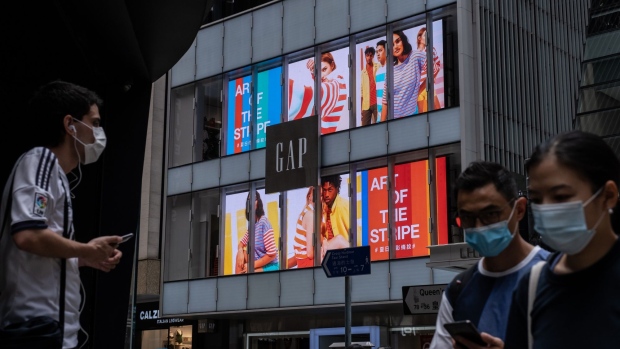Oct 22, 2020
Gap soars after pledging return to profitable growth next year
, Bloomberg News

Gap Inc. jumped after the retailer said it expects to return to profitable growth next year, easing investor concerns over the financial strain of the coronavirus pandemic.
Sales will expand by low- to mid-single digits annually as it tries to reach a profit margin, excluding some items, of at least 10 per cent by 2023, the company said Thursday in an investor presentation. The targets are part of a revamp of its business, including expansion of the Old Navy and Athleta brands, reducing product assortment and rethinking its store footprint to move away from traditional shopping malls.
In three years, the apparel maker wants Athleta and Old Navy to make up 70 per cent of its total sales, up from 55 per cent now. “We felt confident in that our plan is very achievable and it was time to share it,” Old Navy Chief Executive Officer Nancy Green said in an interview.
Gap’s shares soared 14 per cent Thursday for the biggest gain in almost four months. That pushed the 2020 increase to 20 per cent, well ahead of the 6.9 per cent rise in the S&P 500 Index.
Gap is seeking a rebound after the pandemic led to sharp pullbacks in consumer spending on apparel. The company, which also owns Banana Republic and its namesake brand, was deemed a non-essential retailer earlier this year, forcing its stores to go dark during stay-at-home orders around the U.S.
Strategy Shift
Now, with most of its stores reopened, the company is moving forward with a new strategy. Banana Republic, long known as a destination to buy office attire, said it will move away from making men’s suits and focus on selling knits and sweaters.
Gap is also pulling back from malls, where its brands have long been staples. The company wants 80 per cent of its stores to be outside of those shopping centers by 2023.
“We’ve been overly reliant on low-productivity, high-rent stores,” Gap brand CEO Mark Breitbard said at the investor event.
Among the other targets detailed Thursday, the company said it sees operating cash flow reaching 10 per cent of sales and its margin for earnings before interest and taxes at 10 per cent or more in three years.
Athleta, its activewear line, has been a bright spot for the company as consumers buy more comfortable attire during the pandemic. Net sales were up 6 per cent in the last quarter, while sales at Gap, Old Navy and Banana Republic fell. Executives said Thursday that they see Athleta’s sales reaching US$2 billion annually by 2023.
Active Future
Old Navy also sees its future in activewear, Green said. That reflects a larger shift, with retailers such as Kohl’s Corp. also planning to reposition their product lines for a more casual consumer.
Old Navy’s headcount could potentially increase in the categories that the brand is focusing most on, such as its e-commerce business.
“We’re monitoring behavior trends, we’re talking to customers, we’re interacting and watching how they use our products and what’s missing and that’s how we approach creating our product,” Green said.








